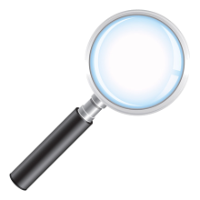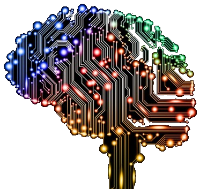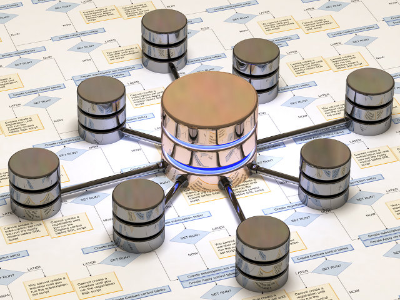
The complexity of sophisticated systems today can be staggering. A form of maintenance intelligence could manage the complexity of systems to make operators and technical support staff more effective. With that said, consider this hypothesis: The capabilities of COTS information technology tools today could transform maintenance effectiveness on orders of magnitude beyond what is currently being done. The key lies in data resources that are readily accessible.
 What
does exist for many systems is some form of logistics
regarding parts replacement frequency or reliability and
maintenance ticket tracking. What doesn't exist or is
difficult to extract is machine digestible data of a
system's inter-connective relationships. This is where the
S1000D is visionary in developing wiring modules that
can provide such a data silo. But what can you do with
all this data?
What
does exist for many systems is some form of logistics
regarding parts replacement frequency or reliability and
maintenance ticket tracking. What doesn't exist or is
difficult to extract is machine digestible data of a
system's inter-connective relationships. This is where the
S1000D is visionary in developing wiring modules that
can provide such a data silo. But what can you do with
all this data?
The S1000D wiring module provides for more than just inter-connectivity information, it also provides hierarchical relationships of components. Effectively the S1000D can capture deeply nested information that is crucial in understanding a system's inter-workings. This deeply nested insight from S1000D wiring modules can make software much more aware of a system's interactions than a human being's ability to understand a system no matter how experienced the expert is!
 By
realizing the potential of wiring modules the justification to
adopt a IEWD (Interactive Electronic Wiring Diagram)
solution is much more than lowering costs to maintain
drawings or in aiding a technician or engineer to trace a wire
on a diagram when troubleshooting a system. The type of
information an S1000D wiring module can provide allows for the
ability to sense relationships across multitudes of diagrams
and therefore provide an infrastructure that can now be
integrated to other information systems or databases. E.g.
populating meta data from OEMs' data-sheets to the wiring
terminals of components potentially allows automated
monitoring of a system's operational idiosyncrasies through
data mining, no wire sensory technology needed. Applying data
analytic technologies that can correlate to component
interconnections is a windfall benefit of an IEWD solution!
By
realizing the potential of wiring modules the justification to
adopt a IEWD (Interactive Electronic Wiring Diagram)
solution is much more than lowering costs to maintain
drawings or in aiding a technician or engineer to trace a wire
on a diagram when troubleshooting a system. The type of
information an S1000D wiring module can provide allows for the
ability to sense relationships across multitudes of diagrams
and therefore provide an infrastructure that can now be
integrated to other information systems or databases. E.g.
populating meta data from OEMs' data-sheets to the wiring
terminals of components potentially allows automated
monitoring of a system's operational idiosyncrasies through
data mining, no wire sensory technology needed. Applying data
analytic technologies that can correlate to component
interconnections is a windfall benefit of an IEWD solution!
We
can go further with this idea; A powerful and effective IEWD
solution can easily integrate to logistic and maintenance
ticket intelligence data silos that cite component
reliability, intermittent behaviors and behavioral
characteristics related to operational stresses or
interactions. Let's not forget maintenance forums whose data
can be integrated as well, pulling in years of experience
of human expertise. This gives the IEWD tool the ability to
discover implied sources of problems immediately! Imagine
a technician or engineer  examining
a power or signal terminal on an assembly and because the IEWD
tool can be integrated to data intelligence cubes of
logistic failure rates of components and/or maintenance ticket
data, it can sense problematic issues that exist in some
deeply nested connection in some unrelated system. By
associating various other data sources to the wring level
prognostic capabilities could be developed. Consider this
scenario: A power assembly is known to suffer from surges
intermittently and the OEM hasn't resolve the issue yet.
Because all direct and indirect wring that connects to
the
examining
a power or signal terminal on an assembly and because the IEWD
tool can be integrated to data intelligence cubes of
logistic failure rates of components and/or maintenance ticket
data, it can sense problematic issues that exist in some
deeply nested connection in some unrelated system. By
associating various other data sources to the wring level
prognostic capabilities could be developed. Consider this
scenario: A power assembly is known to suffer from surges
intermittently and the OEM hasn't resolve the issue yet.
Because all direct and indirect wring that connects to
the  power
assembly are stored through the wiring modules all problem
areas can be known by performing a sophisticated query,
giving technicians and operators a heads up as to what can go
wrong before it happens! Effectively what is created through
these synergies of data resources is a derived knowledge base
that can evolve and learn! The machine literally becomes
smarter and more capable to aid troubleshooting and lower
maintenance costs.
power
assembly are stored through the wiring modules all problem
areas can be known by performing a sophisticated query,
giving technicians and operators a heads up as to what can go
wrong before it happens! Effectively what is created through
these synergies of data resources is a derived knowledge base
that can evolve and learn! The machine literally becomes
smarter and more capable to aid troubleshooting and lower
maintenance costs.
 Also
think of situations where aggregate assemblies composed of
sub-assemblies because of their complexity were simply
replaced can now be evaluated with finer detail to where
the actual problem sub-assemblies and/or components on
sub-assemblies can be identified. These kinds of novel
capabilities from data integration and analytics reduce costs
for storing and replacing parts dramatically and enhances
maintenance solutions lowering MTTR (Mean Time To Repair).
Also
think of situations where aggregate assemblies composed of
sub-assemblies because of their complexity were simply
replaced can now be evaluated with finer detail to where
the actual problem sub-assemblies and/or components on
sub-assemblies can be identified. These kinds of novel
capabilities from data integration and analytics reduce costs
for storing and replacing parts dramatically and enhances
maintenance solutions lowering MTTR (Mean Time To Repair).
 Yet
there is further potential to integrating wiring data to other
intelligence data and that is it opens the door for
automated or A.I. assisted troubleshooting at the wiring
diagram level. Granted this would be of a R&D exploratory
venue for now but having the data infrastructure in place
means deep learning technologies can be applied. The questions
of how to use Artificial Neural Networks for maintenance
analysis could be explored.
Yet
there is further potential to integrating wiring data to other
intelligence data and that is it opens the door for
automated or A.I. assisted troubleshooting at the wiring
diagram level. Granted this would be of a R&D exploratory
venue for now but having the data infrastructure in place
means deep learning technologies can be applied. The questions
of how to use Artificial Neural Networks for maintenance
analysis could be explored.
 Extracting
S1000D wiring modules from any system's current CAD or diagram
resources does require specialized tools. These
specialized tools aren't usually a part of the average tech
pub organization's suite of software. However, COTS solutions
are currently available on the market that can literally
extract assembly and sub-assembly relationships as well as
circuit inter-connectivity between components from static
schematic diagrams and link circuits across multitudes of
diagrams. Using such a tool suite builds the data silo needed
to integrate maintenance intelligence. The project itself is
not as monumental an effort as it might appear from the
complexity of systems such as military and commercial aircraft
or naval vessels with the right tools. In fact systems
composed of hundreds of dense wiring diagrams can be done in a
few months, this includes managing associated content
media for every described component in the diagrams as well!
These tools can also be applied to other types of schematics
such as pneumatic and hydraulic systems and integrate those
systems to data maintenance resources too.
Extracting
S1000D wiring modules from any system's current CAD or diagram
resources does require specialized tools. These
specialized tools aren't usually a part of the average tech
pub organization's suite of software. However, COTS solutions
are currently available on the market that can literally
extract assembly and sub-assembly relationships as well as
circuit inter-connectivity between components from static
schematic diagrams and link circuits across multitudes of
diagrams. Using such a tool suite builds the data silo needed
to integrate maintenance intelligence. The project itself is
not as monumental an effort as it might appear from the
complexity of systems such as military and commercial aircraft
or naval vessels with the right tools. In fact systems
composed of hundreds of dense wiring diagrams can be done in a
few months, this includes managing associated content
media for every described component in the diagrams as well!
These tools can also be applied to other types of schematics
such as pneumatic and hydraulic systems and integrate those
systems to data maintenance resources too.
 The
logistics data sources, maintenance ticket and forum resources
as COTS tools do exist and most organizations have them. Most
COTS data integration tools can perform the ETL (Extract
Transform and Load) tasks needed for some data sources
required from OEMs to the wiring modules. It is common for the
DoD and other organizations to have technology assets such as
SAP, Oracle, and MS SQL as data silos. Creating share points
for such data assets is already apart of those existing
COTS information technology infrastructures and is implemented
as a SOA (Service Oriented Architecture). Those COTS tools
also have the deep learning capabilities as well. As
stated earlier an effective and powerful IEWD can easily
integrate to SOA resources.
The
logistics data sources, maintenance ticket and forum resources
as COTS tools do exist and most organizations have them. Most
COTS data integration tools can perform the ETL (Extract
Transform and Load) tasks needed for some data sources
required from OEMs to the wiring modules. It is common for the
DoD and other organizations to have technology assets such as
SAP, Oracle, and MS SQL as data silos. Creating share points
for such data assets is already apart of those existing
COTS information technology infrastructures and is implemented
as a SOA (Service Oriented Architecture). Those COTS tools
also have the deep learning capabilities as well. As
stated earlier an effective and powerful IEWD can easily
integrate to SOA resources.
 I
will conclude with this note: Some in the industry view the
IEWD as a nice to have tool but not a critical tool for
maintenance. To those I argue that a IEWD with a S1000D
wiring module capability is the corner stone that will provide
the crucial data infrastructure that integrates other
logistic and maintenance data that will pave the way to more
effective system maintenance and enhancements solutions.
Solutions that can be implemented immediately and whose cost
benefits out weight initial costs of the IEWD.
I
will conclude with this note: Some in the industry view the
IEWD as a nice to have tool but not a critical tool for
maintenance. To those I argue that a IEWD with a S1000D
wiring module capability is the corner stone that will provide
the crucial data infrastructure that integrates other
logistic and maintenance data that will pave the way to more
effective system maintenance and enhancements solutions.
Solutions that can be implemented immediately and whose cost
benefits out weight initial costs of the IEWD.
Frank Lombard is the CEO of Atlas Dynamics Corp a leading provider of Interactive Electronic Wiring Diagram production tools.